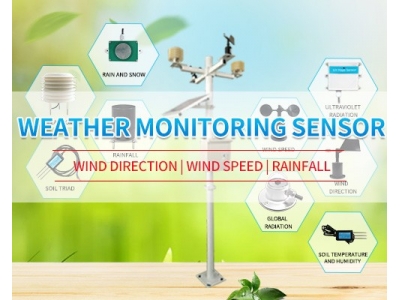
What kinds of sensors are there in a weather station?
The ability to track the weather at home and feed the data to large weather data warehouses has contributed to the popularity of automatic weather station.

The ability to track the weather at home and feed the data to large weather data warehouses has contributed to the popularity of automatic weather station.
Nowadays, weather station is more and more popular with the public and enterprises. The ability to track the weather at home and feed the data to large weather data warehouses has contributed to the popularity of automatic weather stations. In addition, the ease of installation and setup has improved over the past few years.
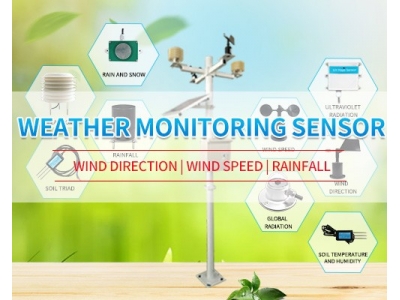
The Automatic Weather Station (AWS) has several key components. It has the sensor group, which measures the weather phenomena, the display, which is located nearby to show the weather data, the wireless transmitter for relaying data to the display (and possibly an internet bridge) and the power system, which often consists of rechargeable batteries and a small solar panel.
The sensor group can vary between AWS models, but in general, there are sensors for temperature, relative humidity, atmospheric pressure, wind and rain. Other models will include solar flux, UV index, air quality, lightning detection and others. This article will focus on the primary sensors.
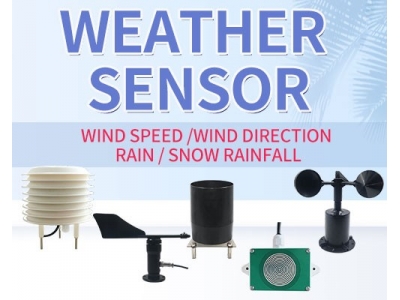
The most basic measurement of all is temperature. When it comes to the weather, people want to know whether to put on a coat or short sleeved shirts, with all other measurements being secondary.
Temperature measurements are performed in one of three ways, depending on the station, though all methods are electrical in nature. Thermocouples, resistance temperature detectors (RTDs) and thermistors are the most used temperature sensing devices.
Thermocouples take advantage of the Seebeck effect, where dissimilar metals in direct contact on one end will generate a voltage at the other end. This voltage varies linearly with temperature.
RTDs, such as the Pt100, are very accurate temperature sensors. As temperature changes, the resistance of materials changes. For platinum, this resistance is linear at all reasonable weather temperatures. The weather station measures the voltage in a Wheatstone bridge circuit that changes to reflect the change in resistance, which changes with respect to the temperature.
Thermistors are a semiconductor temperature sensing device. These are perhaps the most common temperature sensors, as they can be made cost-effectively without subtracting accuracy. They use very little power, which is extremely important for weather stations mounted in remote areas.
The diagram shows a weather station conditions and the density of weather stations in Rio Rancho and northwestern Albuquerque, New Mexico. Source: Wundeground
The diagram shows a weather station conditions and the density of weather stations in Rio Rancho and northwestern Albuquerque, New Mexico. Source: Wundeground
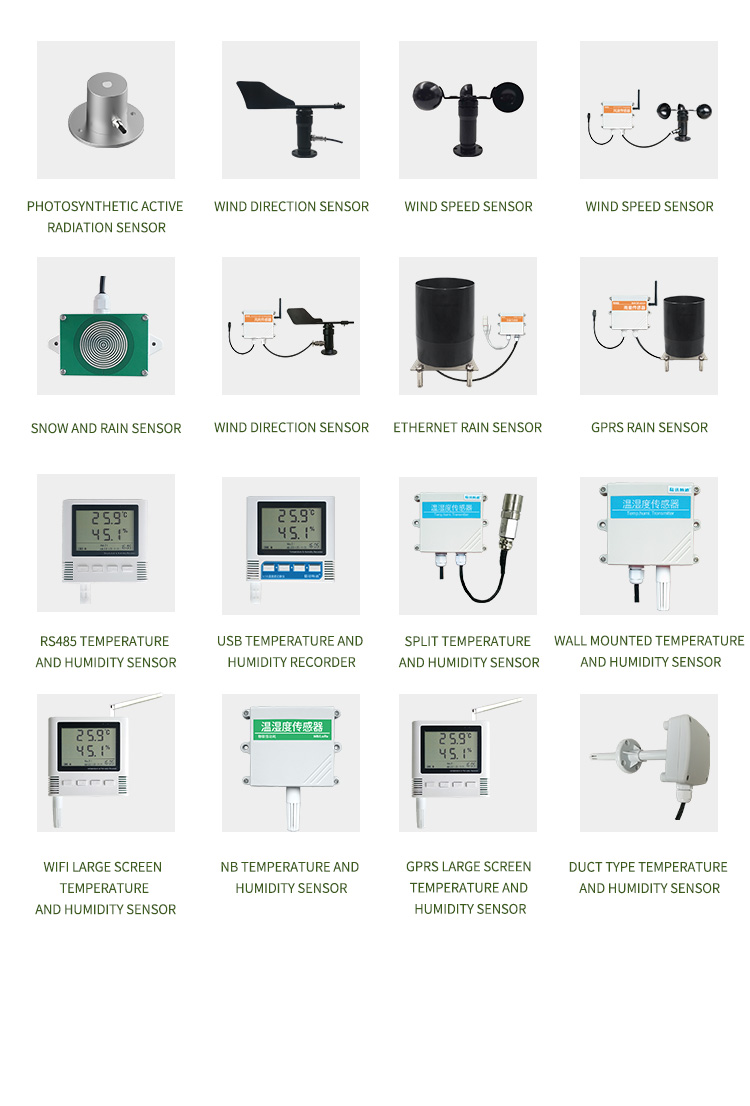
The most common method of measuring relative humidity is using a hygrometer. A hygrometer consists of a hygroscopic polymer that absorbs moisture from the air. The electrical resistance of the polymer is measured; the higher the humidity, the more moisture is absorbed and the lower the resistance.
In terms of the home weather station, the hygrometer is a vast improvement over the wet-bulb method of determining humidity. The hygrometer’s output is the relative humidity, expressed as a percentage of moisture that the air can hold. The average person understands 20% relative humidity is a dry day and 90% relative humidity is a humid day.
Wet-bulb thermometers have a thermometer whose bulb is surrounded by a wet cloth. As the water evaporates, it cools the bulb, lowering the temperature. Eventually, no more water can evaporate from the cloth. This temperature reading is the wet-bulb temperature. From there, the wet-bulb temperature can be used to find the dewpoint, and the dewpoint used to find the relative humidity. While meteorologists make use of dewpoint temperatures, average people do not. A dewpoint of 50° F may be a humid day, if the surface temperature is 52° F, or a dry day, if the surface temperature is 100° F.
To detect pressure, modern weather stations use either a piezoelectric sensor or a diaphragm sensor. In the piezoelectric sensor models, a change in pressure against a piezoelectric material generates a small voltage. This voltage is calibrated against pressure for the measurement.
For diaphragm models, a small, flexible material is outfitted with a strain gauge, which changes electrical resistance as the diaphragm stretches in response to pressure. Some piezoelectric models also have a strain gauge for added sensitivity.
All of these gauges measure absolute pressure. Pressure is simply force divided by the area, so absolute pressure is the force exerted by the atmosphere above the sensor divided by the area of the sensor. The higher a pressure sensor is located above sea level, the less force is acting on it, meaning the lower the air pressure.
However, when the television meteorologist talks about pressure, they are talking about relative pressure. Relative pressure is where air pressure has been normalized to sea-level. In order to see subtle low pressure systems and high pressure systems that control the weather, relative pressure is used. This means that even though the absolute air pressure is much lower over the mountains, it will be adjusted so that the sensor behaves as though it were at sea level.
Most pressure sensors will report absolute pressure but are then adjusted in software to reflect relative pressure.
Wind sensing is divided into two pieces: speed and direction. Components are paired together and must be placed out of the way of interfering objects that might block the wind flow from specific directions.
Wind speed is measured by an anemometer. The anemometer is a set of three cups that will spin when the wind blows. Inside the anemometer is a Hall effect sensor and a few magnets. As the wind blows the anemometer cups, it spins the magnets past the Hall effect sensor. Each time a magnet passes the sensor, a pulse is counted — the more pulses per second, the faster the wind speed.
Wind direction is measured by an aerovane. An aerovane has a pointer and a fin on a set of bearings. When the wind blows, the fin is blown to provide the least resistance, causing the pointer to point to the source region of the wind. Wind direction is always reported from the direction the wind comes from, not where it is going to. To record this value electronically, the aerovane is attached to a rotary encoder.
This encoder must be oriented to true north, and the output of the aerovane will be in degrees, where zero degrees is true north. If magnetic north is used for calibration (as often happens with home installations) the wind direction will be with respect to magnetic north.
Most home weather stations, as well as official National Weather Service (NWS) stations use a “tipping bucket” method for measuring rainfall. In a tipping bucket weather station, a funnel catches rainwater over a large area and drops it into one side of a two-sided cup. The two-sided cup is balanced on a fulcrum. As the rain accumulates on one side of the cup, it tilts on the fulcrum, exposing the second side of the cup to the funnel, and slowly draining the first side. A reed switch counts the number of “tips.” Because each tip represents a small quantity of rain (typically 0.01 inch), the number of tips can be easily multiplied to find the total rainfall.
This offers several improvements over a traditional rain gauge. Rain gauges are checked periodically, meaning they are subject to evaporation, overflow or debris falling into them. While a tipping bucket still suffers from debris falling into them, it is easily detected as “rain” on sunny days.
Tipping bucket rain gauges have a small level built into them, as they must be level to operate correctly. Because of this, they are often hard mounted to a surface to keep them from being knocked out of level by the wind.
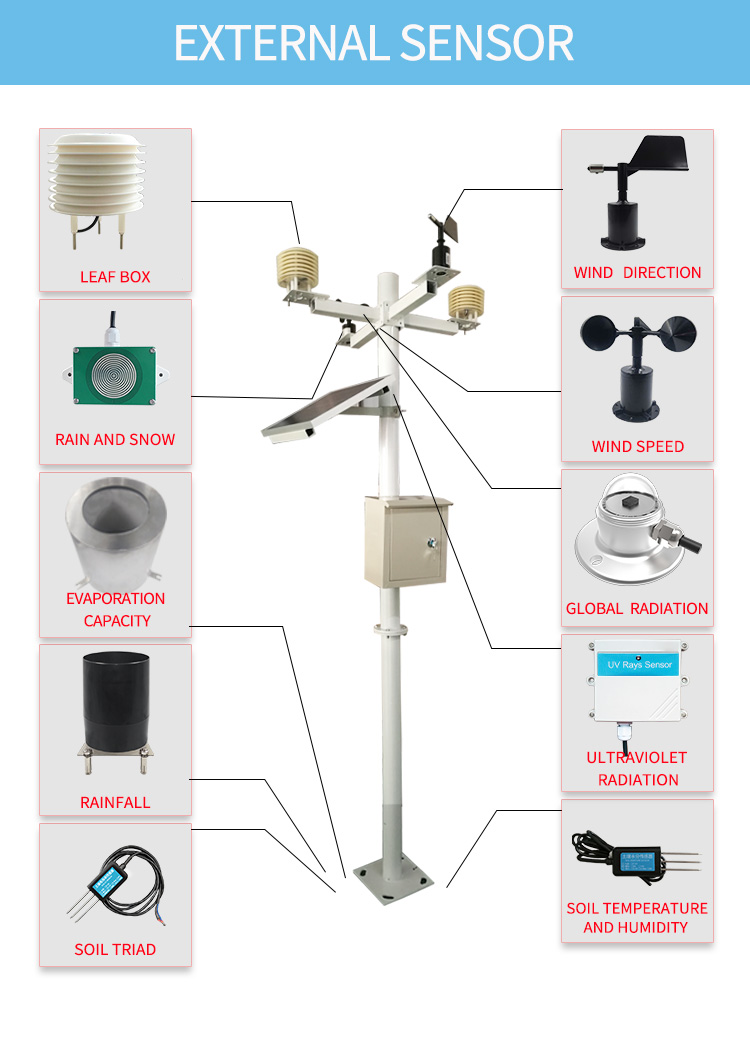
As the sensor technology for weather stations decreases in price but increases in reliability, weather stations will become more prevalent. The NWS has standards for mounting weather stations for the most reliable data — as more stations adopt these methods, more weather data will become available, increasing the resolution of weather models and improving localized forecasts.